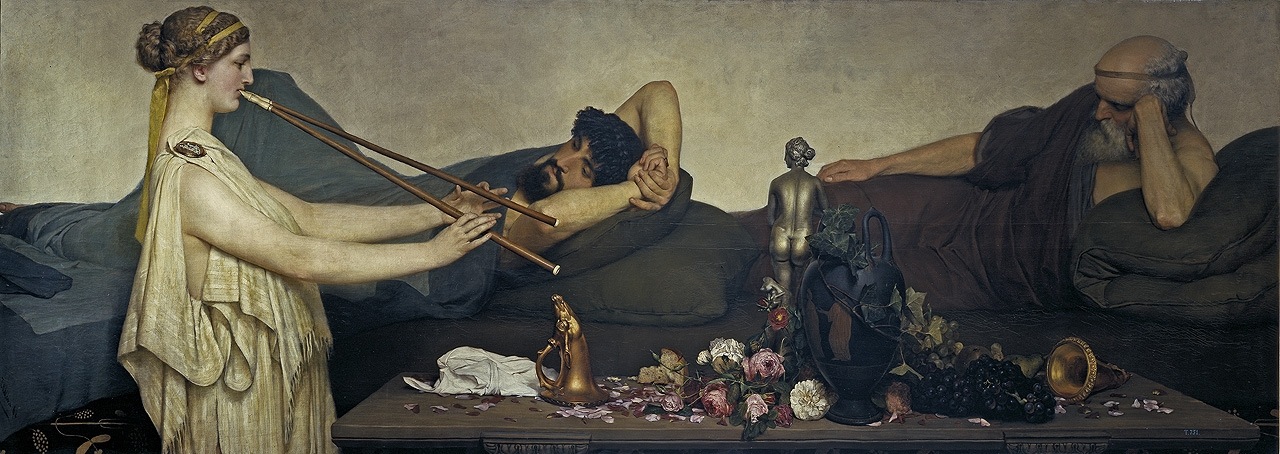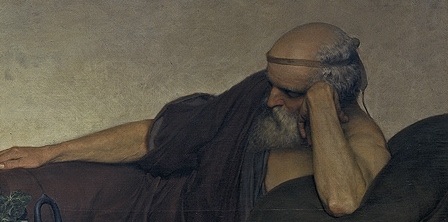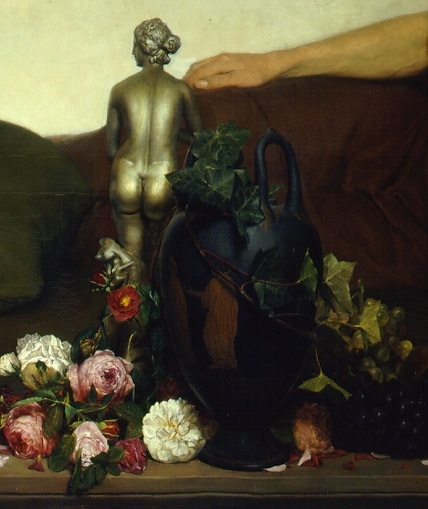An unpublished work by Sir Lawrence Alma-Tadema
As those of you who follow my tweets (apologies for the shameless Twitter plug) know, I have been traveling for the past three weeks. I was in Spain for eleven days, France for one, and another five in California. To some it might sound like glamorous, Indiana-Jonesing; but, in reality, I spent most days underground in dusty archives looking for undiscovered, art-historical morsels and nights transcribing nineteenth-century handwriting. Along the way, I came across a number of remarkable works of art, some not seen for more than a hundred years. I plan to share some of them. I begin with A Scene from Pompeii (1868), a previously unpublished and little-known work by Sir Lawrence Alma-Tadema (Dutch and British, 1836-1912).
This morning, I spoke with Vern Swanson, a mentor of mine and author of Alma-Tadema's catalogue raisonné. Dr. Swanson did not include an illustration of the painting in his book–the most definitive on the subject–because A Scene from Pompeii was unavailable until recently. As one of Alma-Tadema's most ambitious early paintings, it has been in storage at the Museo Nacional del Prado for nearly 100 years. This year A Scene from Pompeii was hung for the first time in the Prado's new, permanent wing dedicated nineteenth-century painting and sculpture.
Alma-Tadema's works, famous for Olympian themes that idealized a bygone empire, may seem more at place in France or Great Britain than in Spain. At the Prado, A Scene from Pompeii makes strange bedfellows with a generation of nineteenth-century Spanish artists who sometimes trained in France, but nonetheless venerated classical realists like Diego Velázquez and José de Ribera.
This painting is one of only a handful of foreign nineteenth-century works in the Prado's collection. It was donated to the short-lived, Spanish Museo de Arte Moderno in 1887 by Ernesto Gambart, then Spanish Consul to Nice (France). When the Museo de Arte Moderno was absorbed into the Prado a few years later, nearly all of the its collections, including this work by Alma-Tadema, were placed in storage where they have been ever since. Only now, under the leadership of Javier Barón, Director of Nineteenth-Century Painting at the Prado, are these works being fully restored and finally displayed.
A Scene from Pompeii (1868) dates to a happy and prolific period in Alma-Tadema's life. Five years earlier, he married his first wife, Marie-Pauline Gressin, in Antwerp. Their honeymoon was spent in Florence, Rome, Naples and Pompeii. For the next several years, he absorbed and transmuted his personal experience with the classical tradition into a series of paintings that quoted Greco-Roman architecture and artworks, such as a bronze reproduction of Aphrodite by the Greek sculptor Praxiteles (4th-century BC), in this work.
Alma-Tadema is often remembered for his British works created after the death of his wife in 1869. These exquisitely detailed scenes sometimes feature dozens of figures painted in jewel-like colors. However, before 1869, his works regularly exhibited the same restricted, earth-tone palette of A Scene of Pompeii. While this painting shares the trademark precision Alma-Tadema's larger oeuvre, its composition is unusual. I am not an expert on Alma-Tadema; but, I am surprised by the Baroque proportions of the figures which, unlike other works by Alma-Tadema, fill the canvas to near capacity.
It is always a pleasure to find new works by an artist as well-known and respected as Sir Alma-Tadema. I am sure that the Prado will have more insightful and important things to say about the painting as the new nineteenth-century wing becomes more public.


